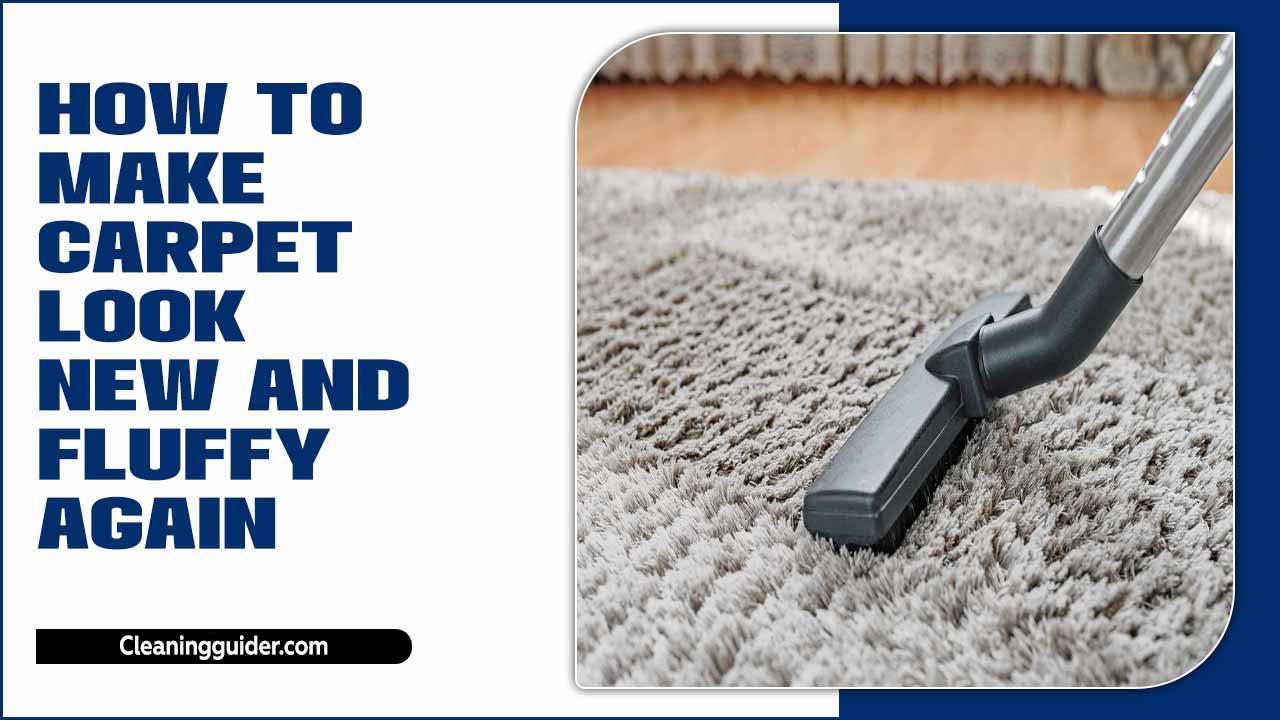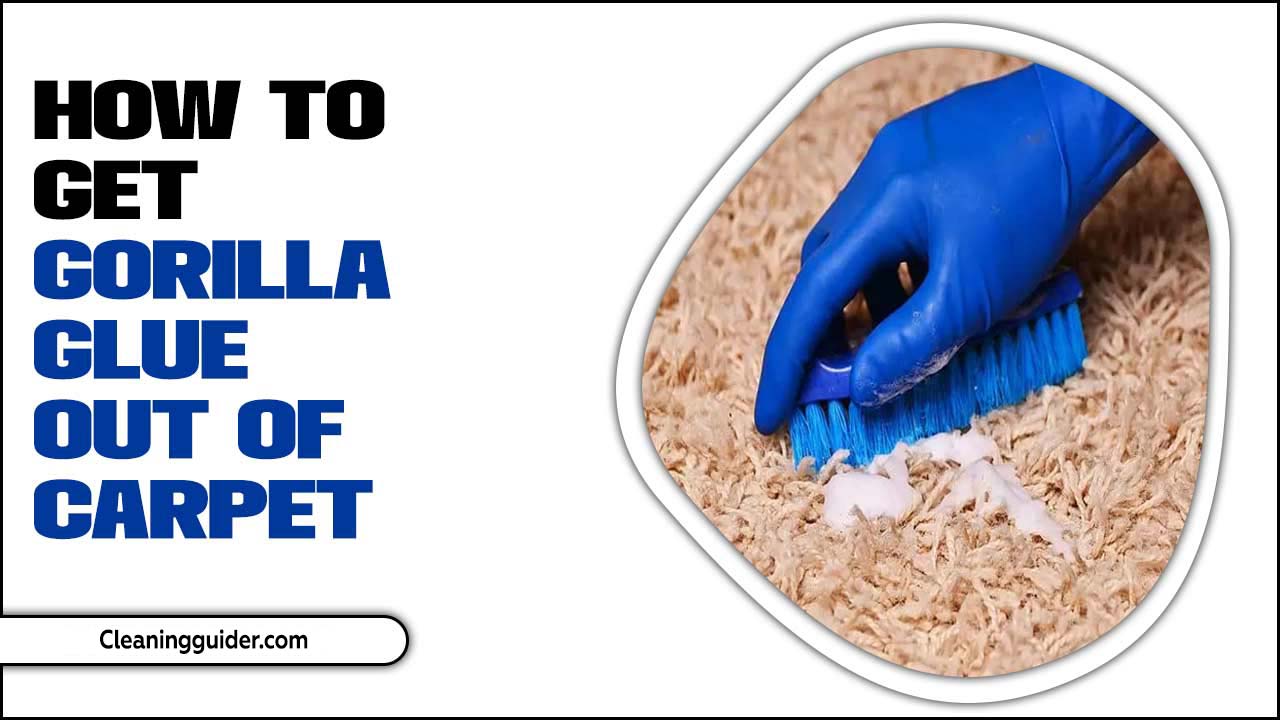Are you tired of walking over bumpy carpeting? Carpet bubbles, also known as carpet buckling, can be a frustrating problem for homeowners. Not only do they look unsightly, but they can also pose a tripping hazard.
Thankfully, fixing a carpet that has bubbled is not as difficult as it may seem. We will cover everything you need to know about how to fix carpet that has bubbled and provide step-by-step instructions on how to fix them.
We’ll also discuss tips for preventing future carpet bubbles and answer some frequently asked questions about this common issue. Whether you’re a DIY enthusiast or prefer to leave things to the professionals, we’ve got you covered!
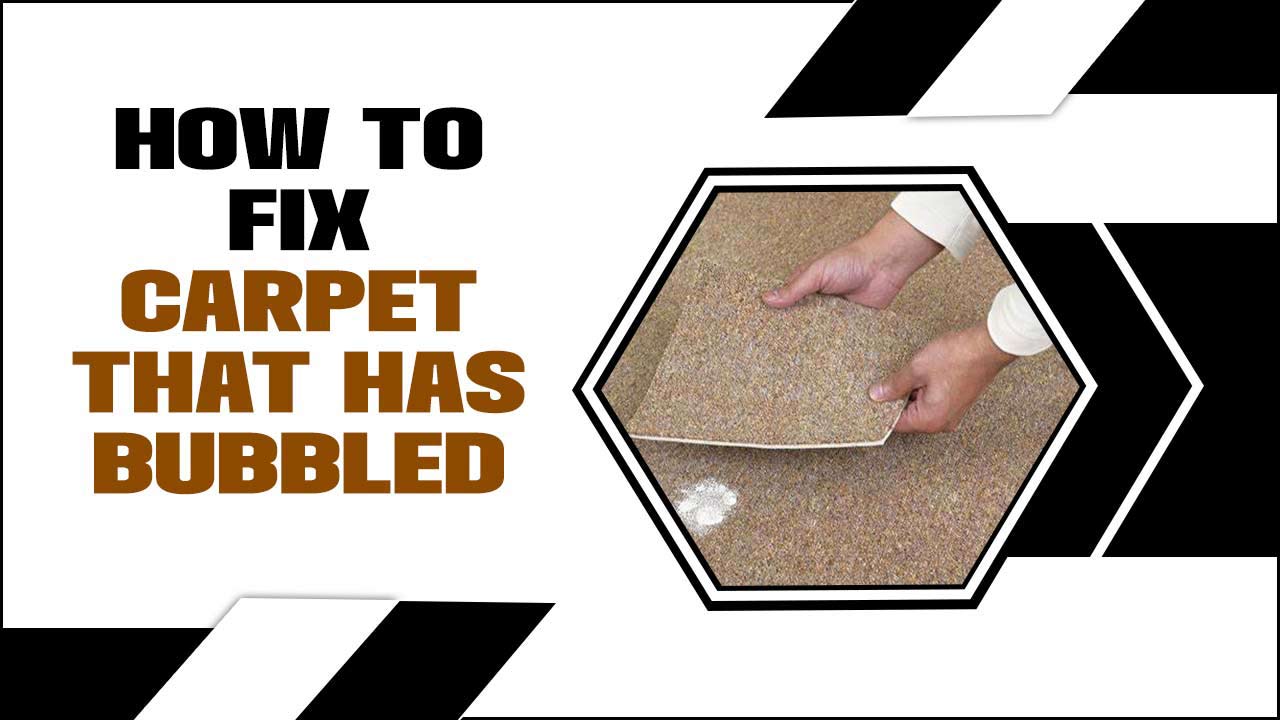
The Causes Of Carpet Bubbles
Moisture and high humidity contribute to carpet bubbles, making them a common issue for homeowners. Improper installation can also lead to bubble formation, as can excess air trapped underneath the carpet. Subfloor issues, such as uneven or damaged flooring, can further exacerbate the problem.
Additionally, insufficient padding may result in bubbles forming in the carpet. Understanding the causes of carpet bubbles is crucial in addressing this issue effectively. By identifying the root causes, you can determine the severity of the problem and take the necessary steps to fix it.
Assessing The Damage
To fix carpet bubbles, it’s crucial to assess the extent of the damage. Start by checking the severity of the bubble, whether it’s a small area or covers a larger portion. Next, identify the affected area of the carpet and determine if the carpet is loose or detached.
Assess the condition of the carpet fibres, looking for any signs of wear or damage. Additionally, keep an eye out for any moisture or stains that may indicate underlying issues. Evaluating these factors will help you determine the severity of the issue and guide your next steps in fixing the problem.
Gathering The Necessary Tools And Materials
When fixing a carpet that has bubbled, having the right tools and materials is essential. Here are some of the items you will need to gather before you start:
- Utility Knife: A sharp utility knife will be necessary for cutting away any excess carpet or padding.
- Carpet Adhesive: You will need a strong carpet adhesive to reattach the carpet to the floor.
- Carpet Stretcher: If the carpet has significant bubbling, a carpet stretcher may be needed to stretch and flatten the carpet.
- Knee Kicker: A knee kicker can be used to push the carpet into place and secure it along the edges.
- Tack Strips: Tack strips are used to hold the carpet in place along the edges of the room.
- Seam Roller: A seam roller can be used to ensure a smooth and secure bond between the carpet and adhesive.
By gathering these tools and materials beforehand, you’ll be well-prepared to tackle your bubbled carpet and restore it to its original condition.
5 Steps For How To Fix Carpet That Has Bubbled
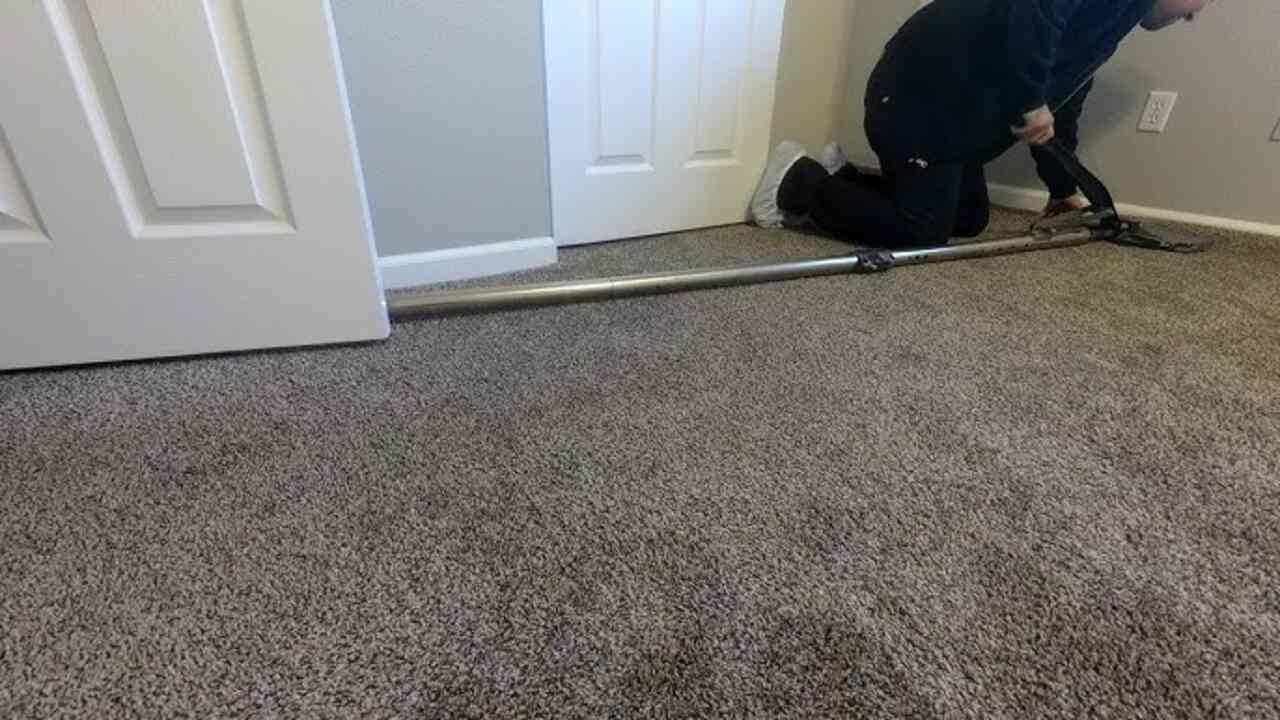
When maintaining the appearance and functionality of your carpet, encountering a bubbled carpet can be quite frustrating. However, fear not, as there are steps you can take to fix this issue and restore your carpet’s smooth and even surface. Here are five essential steps to follow when how to fix a carpet that has bubbled.
Prepare The Area
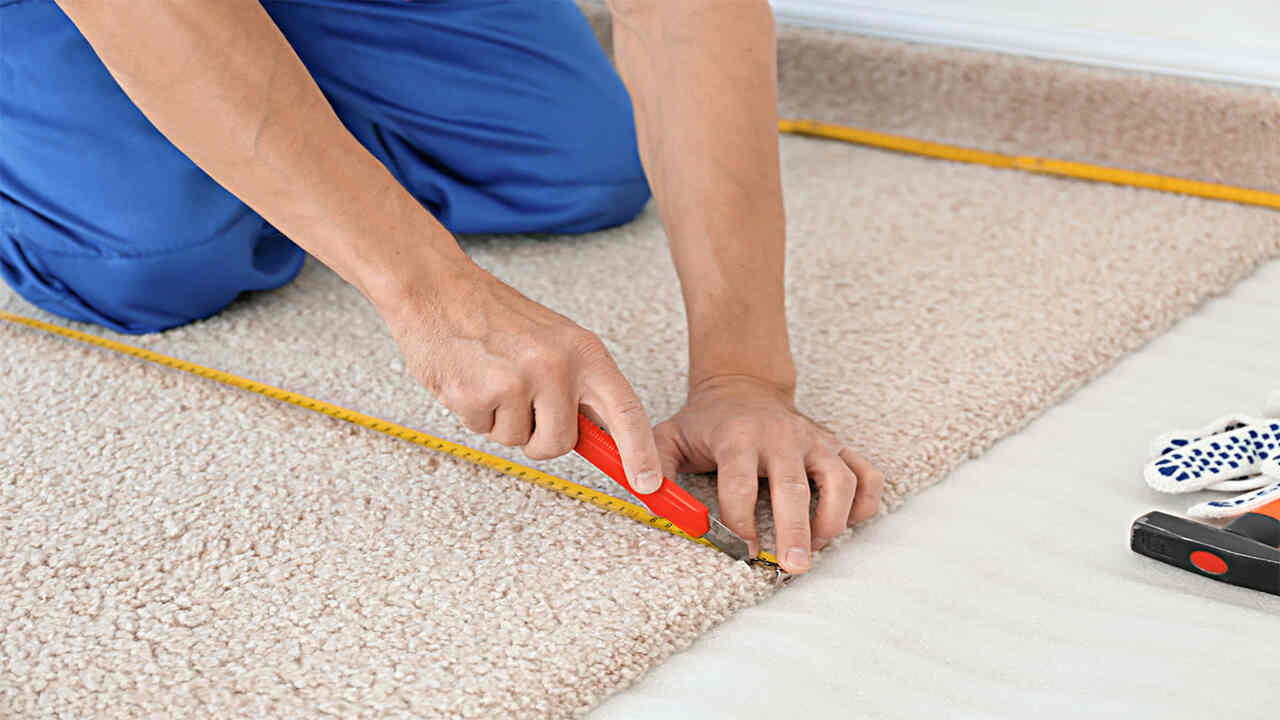
To prepare the area for fixing the carpet that has bubbled, start by removing all furniture and objects from the affected area. Next, thoroughly vacuum the area to eliminate any dirt or debris that may interfere with the repair process.
Use a scraper or putty knife to gently lift the edges of the carpet where it has bubbled, allowing you to access the underlying issue more effectively. If the carpet is wet, it’s essential to dry it out completely before proceeding with any repairs. Additionally, ensure that the subfloor or padding underneath the carpet is in good condition before attempting to reattach the carpet.
Release The Excess Air
To release the excess air from a carpet bubble, begin by using a large syringe to inject air into the centre of the bubble. Gently press down on the carpet to release the excess air. It may be necessary to repeat this process until the bubble flattens completely. Releasing the excess air helps to restore the carpet’s appearance and prevent further damage. Once the excess air is released, you can move on to the next step of reattaching the carpet.
Reattach The Carpet
To reattach the carpet, start by determining the severity of the issue. If it’s a small area, you can use a new carpet adhesive or glue to fix it. Begin by lifting the loose carpet with pliers. Apply the adhesive directly to the centre of the bubble and press the carpet firmly into place. Work from the centre towards the edges, smoothing out any wrinkles or buckling.
For larger areas or if the carpet backing is damaged, it may be a good idea to replace the carpet pad or even consider installing a new carpet altogether. After reattaching the carpet, give it some time to dry and set before walking on it.
Secure The Carpet Edges

To secure the carpet edges, start by determining the severity of the issue. If it’s a small area, you can use a new carpet pad or glue to reattach the loose carpet. For larger areas, you may need to use pliers to remove the carpet backing and expose the underlying flooring. Once you remove the backing, clean the area thoroughly to ensure proper adhesion.
Then, apply glue to the edges of the carpet and press them firmly onto the floor. Use a rug or mat to weigh down the edges while the glue dries. Repeat this process for any other affected areas. Remember to check the centre of the bubble as well as the edges.
Finishing Touches
After securing the carpet edges and reattaching the carpet, you’re almost done fixing the bubbled carpet. Now it’s time for the finishing touches. Start by checking the surrounding area to ensure there are no loose threads or frayed edges. Use pliers to trim any excess carpet if necessary carefully.
Next, give the carpet a thorough cleaning using a nozzle attachment on your vacuum cleaner to remove any dirt or debris. Finally, take a step back and inspect the repaired area. If everything looks good, it’s time to enjoy your newly fixed carpet and the satisfaction of a job well done.
Tips For Preventing Future Carpet Bubbles
Preventing future carpet bubbles is important to maintain the appearance and longevity of your flooring. By following these tips, you can minimize the risk of future carpet bubbles and keep your flooring looking its best for years to come. Here are some tips to help you avoid future carpet bubbles:
- Use A Good Quality Padding: Using high-quality padding underneath your carpet can provide added support and prevent it from stretching or shifting.
- Avoid Excessive Humidity: Humidity can cause carpets to expand and contract, leading to bubbles. Use dehumidifiers or air conditioners to regulate the humidity levels in your home.
- Proper Installation: Hire a professional installer who follows manufacturer guidelines to ensure that your carpet is effective correctly.
- Regular Maintenance: Vacuuming regularly can help prevent dirt and debris from accumulating under the carpet, which can contribute to bubbling. Additionally, avoid dragging heavy furniture across the carpet, as this can stretch and damage the fibres.
Professional Carpet Repair Vs. DIY Fixes

When fixing a carpet that has bubbled, you have a couple of options: professional carpet repair or a DIY fix. Professional carpet repair can be a good option if you want a long-lasting and seamless result.
Trained technicians have the expertise and specialized tools to stretch and reattach the carpet, ensuring a smooth surface. However, this option can be costly. On the other hand, if you’re on a budget or prefer to take matters into your own hands, there are several DIY fixes you can try.
These include using a knee kicker or power stretcher to stretch the carpet yourself or using adhesive or double-sided carpet tape to secure the edges back down. Keep in mind that while DIY fixes can be more affordable, they may not provide as durable or professional-looking results as hiring a professional. Consider your budget, time constraints, and desired outcome when deciding which option is best for you.
Troubleshooting Common Issues
If you notice that your carpet has bubbled or become loose in certain areas, there are a few troubleshooting steps you can take to address the issue:
- Start by identifying the cause of the bubbling. It could be due to improper installation, humidity or moisture issues, or even heavy furniture that has compressed the carpet.
- If humidity or moisture is causing the bubbling, try using a dehumidifier to reduce the moisture in the room and allow the carpet to dry out naturally. You can also use a fan to help speed up the drying process.
- For cases where heavy furniture is causing the carpet to bubble, try rearranging or removing the furniture to relieve pressure on the affected area. You may also want to consider investing in furniture pads or coasters to distribute weight more evenly.
- If none of these solutions work, it may be necessary to call a professional carpet installer or repair service to fix the problem. They will have the expertise and tools needed to properly re-stretch and secure the carpet, ensuring that it lays flat and smooth once again.
Remember, tackling this issue sooner rather than later can help prevent further damage and prolong the lifespan of your carpet.
Conclusion
You can easily fix carpet bubbles with the right tools and techniques. By identifying the causes of carpet bubbles, assessing the damage, and following the step-by-step process outlined in this guide, you can restore your carpet to its original condition. Additionally, it’s important to take preventative measures to avoid future carpet bubbles, such as maintaining proper humidity levels and avoiding heavy furniture placement.
If you’re unsure about tackling this repair yourself, it may be best to consult with a professional carpet repair service. With these tips and tricks, you’ll have a smooth and bubble-free carpet in no time. We hope you understand how to fix carpet that has bubbled.
Frequently Asked Questions
1.Can Ripples In Carpet Be Fixed?
Ans: Yes, you can fix ripples in the carpet by stretching the carpet to remove excess slack. Experts and tools recommend hiring a professional. Prevent future ripples by regular vacuuming and avoiding heavy furniture on the carpet.
2.What Causes Carpet To Bubble Up?
Ans: Improper installation or low-quality padding often causes carpet bubbling. Moisture and heavy furniture can also contribute to the problem. Promptly addressing carpet bubbling is essential to prevent further damage.
3.How Do You Fix A Buckling Carpet?
Ans: To fix a buckling carpet, start by cutting a small slit to release trapped air. Apply adhesive and press down firmly. Use a knee kicker or power stretcher to stretch the carpet back into place. Finally, trim the excess carpet and secure it with tack strips.
4.How Do You Smooth Out Ripples In A Carpet?
Ans: To smooth out ripples in the carpet, start by identifying the cause, such as humidity or improper installation. Use a knee kicker or power stretcher to stretch the carpet towards the opposite wall. Trim excess carpet and re-tuck it into the baseboard with a carpet tucker tool. Consider hiring a professional for larger repairs.
5.Is It Normal For Carpet To Bubble?
Ans: Carpet bubbling is not normal and can be caused by improper installation, moisture issues, or heavy furniture. It’s important to address this issue promptly to prevent further damage. A professional carpet installer can identify the cause and fix it properly.



